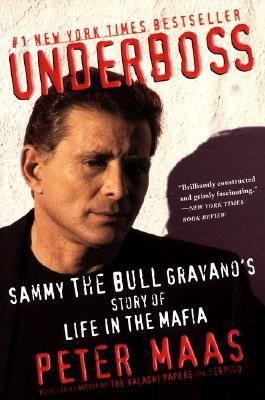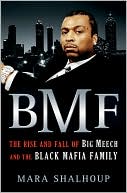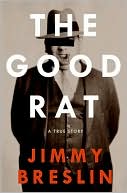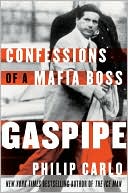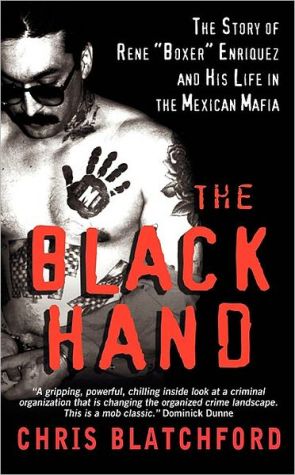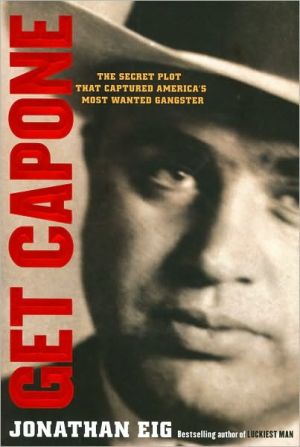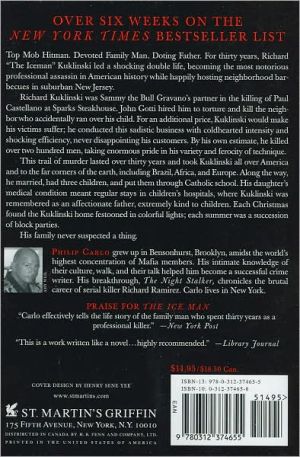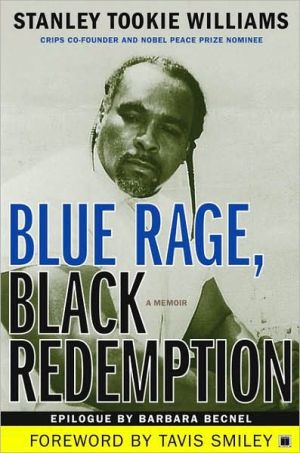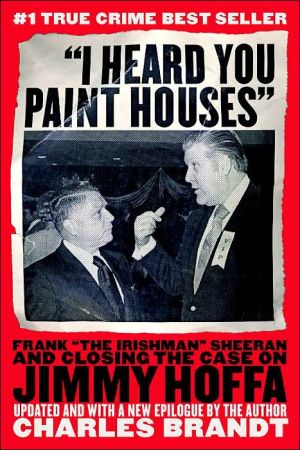Underboss
Sammy the Bull Gravano is the highest-ranking member of the Mafia in America ever to defeat. In telling Gravano's story, Peter Maas brings us as never before into the innermost sanctums of the Cosa Nostra as if we were there ourselves—a secret underworld of power, lust, greed, betrayal, and deception, with the specter of violent death always waiting in the wings.
Search in google:
In March of 1992, the highest–ranking member of the Mafia in America ever to break his oath of silence testified against his boss, John Gotti. He is Salvatore ("Sammy the Bull") Gravano, second–in–command of the Gambino crime family, the most powerful in the nation. Because of Gotti‘s uncanny ability to escape conviction in state and federal trials despite charges that he was the Mafia‘s top chieftain, the media had dubbed him the "Teflon Don." With Sammy the Bull, this would all change. Today Gotti is serving life in prison without parole. And as a direct consequence of Gravano‘s testimony, the Cosa Nostra – the Mafia‘s true name – is in shambles. Peter Maas is the author of the international bestseller The Valachi Papers , which Rudolph Giuliani, then a federal prosecutor and now the mayor of New York City, hailed as "the most important book ever written about the Mafia in America." In Underboss, based on dozens of hours of interviews with Gravano, we are ushered as never before into the most secret inner sanctums of Cosa Nostra – and an underworld of power, lust, greed, betrayal, deception and sometimes even honour, with the spectre of violent death always poised in the wings. It is a real world we have often read and heard about from the outside; now we are able to experience it in rich, no–holds–barred detail as if we were there ourselves. Unlike his glamorous boss John Gotti, Sammy the Bull honoured Costra Nostra‘s ancient traditions, hugging the shadows, avoiding the limelight and staying far from the flashbulbs and reporters. But he was present at such key events of the modern Costra Nostra as the sensational slaying of mob boss Paul Castellano, Gotti‘s predecessor, outside a Manhattan steakhouse. Compulsively readable, Gravano‘s revelations are of enormous historical significance. "There has never been a defendant of his stature in organised crime," the federal judge in the Gotti trial declared, "who has made the leap he has made from one social planet to another." Gravano‘s is a story about starting out on the street, about killing and being killed, revealing the truth behind a quarter century of shocking headlines. It is also a tragic story of a wasted life, unalterable choices and the web of lies, weakness and treachery that underlies the so–called "Honoured Society." Donald E. Westlake Terrific...an important book...a gripping story. It's important because it is a morality play on the subject of loyalty. —New York Times Book
Chapter One\ They're bad people, but they're our bad people.\ \ "Yeah, you could say i came from a pretty tough neighborhood," Salvatore (Sammy the Bull) Gravano said.\ The neighborhood was Bensonhurst, roughly two miles square, in southwestern Brooklyn bordering Gravesend Bay and the Atlantic Ocean.\ Unlike the first Italian communities in New York, such as Manhattan's Little Italy, which was being swallowed up by an aggressively expanding Chinatown, or East Harlem, clinging to a narrow strip along the East River against the inroads of a booming Hispanic population, Bensonhurst remained vibrantly and definitively Italian-American. Even today it is where recent arrivals from southern Italy and Sicily settle. In Roman Catholic churches, some masses are sung in Italian.\ As with other ethnic migrations in the city, the subway paved the way when in the early 1900s the first rapid transit lines linking Brooklyn to Manhattan went into service, one of them going directly from the dark and crowded tenements of Little Italy to the open spaces of Bensonhurst.\ It has a small-town feel. Many of the cross streets lack traffic lights. Cruising taxis, common in most of the city, are rare. Houses are mostly two-family dwellings of aluminum siding, stucco or brick with wrought-iron gates painted white and porches with their ubiquitous steel awnings. Tiny front lawns feature potted flowers and statues of the Virgin Mary and in backyards, more often than not, are vegetable gardens. Bensonhurst's main street, 18th Avenue, also officially designated Cristoforo Colombo Boulevard, is lined with Italian delicatessens, bakeries, fresh mozzarella shops, food marketsoverflowing with packaged products imported from Italy, pizza parlors boasting traditional wood-burning ovens and espresso bars.\ In Bensonhurst, everyone knows everyone else on every block. Its mainly blue-collar residents are insular, closemouthed and suspicious of outsiders. Strangers are remarked on at once. As a result, the rate of common street crimes--rapes, robberies, felony assaults--is low compared to other parts of the city, according to police statistics. Murder is a third less than the citywide average.\ But Bensonhurst was tough in a very special sense. A great number of these murders were mob related. It was a prime spawning ground for Cosa Nostra--"Our Thing"--which filled its ranks from local youth street gangs that hung out at candy stores and luncheonettes throughout the area. One of the original members of Cosa Nostra's national commission, Joseph Profaci, the so-called Olive Oil King because of his monopoly on the importation of olive oil from Italy, lived in Bensonhurst. So did his successor as a family boss, Joseph Colombo. One of the grandest underworld funerals ever seen in New York, complete with thirty-eight carloads of flowers, took place in Bensonhurst following the Prohibition-era slaying of a celebrated mobster named Frankie Yale, who had a falling out with Al Capone.\ As in a Sicilian village, Cosa Nostra's shadow loomed large over Bensonhurst and was spoken of only in whispers. "They just shoot themselves," a resident confided after two corpses were found in a car, gazing vacantly into space, each with a bullet hole behind the ear. "The thing is, you mind your own business. You don't hear nothing. You don't see nothing." Another said, "You got to admit the Mafia, whatever, keeps the neighborhood safe. You don't see all them other people coming in to mug and burglarize here. So their presence is kind of good is my opinion."\ \ Salvatore Gravano was born in Bensonhurst on March 12, 1945. He had two older sisters. Another sister and a brother had died before his arrival. His mother, Caterina, was born in Sicily and brought to America as a baby. His father, Giorlando, also from Sicily, was on the crew of a freighter when he jumped ship in Canada and slipped into the United States as an illegal alien.\ For Sammy and for friends and neighbors, his parents were always Kay and Gerry. English was the language of the house, except during visits from his grandmothers, who spoke a Sicilian dialect. Sammy was especially close to his maternal grandmother and picked up enough to be able to converse with her, but forgot it all after she died.\ He was called Sammy instead of Salvatore or Sal for as long as he can remember. Someone had said that he looked just like Uncle Sammy, a brother of his mother's, and the name stuck. The uncle was Big Sammy and he was Little Sammy. He grew up on 78th Street in the heart of Bensonhurst near 18th Avenue. His father owned the house, the middle one of three identical brick row houses, each with a garage. Steps led up to the front porch. The basement apartment was rented out, as well as an apartment on the second floor. The Gravanos lived in the middle apartment. In a small plot behind the house, Sammy's father cultivated tomatoes and beans and tended to his prized fig tree.\ Kay was an exceptionally skilled seamstress who worked for a Jewish dress manufacturer in Manhattan's garment center. Gerry was a house painter until he was felled by lead poisoning and could no longer continue his trade. The dress manufacturer then financed the Gravanos in a satellite factory of their own in Bensonhurst. Kay supervised the filling of the orders he sent her and rode the subway to the garment center to sew the sample dress for a forthcoming line, while Sammy's father took care of the business end. Things went so well that Gerry was able to afford the purchase of a summer cottage for $8,000 near Lake Ronkonkoma in the middle of Long Island.
\ Albert MobilioLike the apologias of political apostates -- or, from an earlier time, the conversion testimonials of saints -- the enduringly popular Mafia confessional serves its own era by recounting in lush detail how, by scaling a great heap of sin, the sinner can reach salvation. A morally bracing and redemptive tale, it reassuringly allows us to pit our trifling wrongs against downright evil and thus to shine by comparison. So when Sammy "The Bull" Gravano, the former underboss of the Gambino crime family and admitted murderer of 19 fellow miscreants, spills his naughty beans, we are all ears; witness the tabloid headlines surrounding this book's publication, its rapid shot to the top of the bestseller lists and the juicy ratings for a two-night network TV author interview. Gravano may not be a St. Augustine or a Whittaker Chambers, but this jail-house songbird is whistling from behind bars like a virtuoso.\ A Brooklyn schoolyard bully who was drawn to the power of neighborhood Mafiosi, Gravano matured into a first-rate thug, albeit one with considerable strategic acumen. By the mid-'70s, he had become a "made man." To get in you have to "make your bones," that is, carry out a contract killing. In effortlessly hard-boiled prose, Gravano recalls shooting a friend (typical in the Mafia because friends and family have ease of access) in the back of the head during a car ride after a night of partying: "As that Beatles song played, I became a killer. Joe Colucci was going to die ... I could almost feel the bullet leaving the gun and entering his skull. It was strange. I didn't hear the first shot. I didn't seem to see any blood. His head didn't seem to move."\ Having inhaled the heady, operatic atmosphere of The Godfather, Gravano possessed an altar boy's hallowed regard for the Sicilian code of honor and silence (omerta). But this was one altar boy you didn't cross -- when a flashy Czech drug dealer showed disrespect, Sammy had his eyes shot out. A gangster's gangster, Gravano was also a skilled racketeer who eventually controlled much of the drywall construction and concrete pouring business in New York. When he allied himself with a truculent, charismatic capo from Queens named John Gotti to eliminate their capo di tutti capi, Paul Castellano, the two formed a potent combination of business and street smarts. Staged in midtown Manhattan at the dinner hour, the Castellano murder instantly became one of the most notorious mob hits in history. Along with the power it brought them, it also subjected both men to a high degree of media and law enforcement attention, ensuring, in tragic fashion, their downfall. The garrulous, flamboyant Gotti loved the spotlight; Gravano didn't. (The FBI taped Gravano for over 4,500 hours in his private office and didn't get evidence enough for a parking ticket; they taped Gotti for six hours in an apartment above his social club and he gave away the entire show, including implicating Sammy in two murders.)\ Betrayed by Gotti, Gravano decided to come in from the cold. He cut a shrewd deal with federal prosecutors and walked out of prison after just eight years. Now with amanuensis Peter Maas, who also shepherded the confessions of the original Mafia turncoat, Joe Valachi, into print, Gravano tells a true-crime tale packed with the shiver of authenticity. Among the growing crop of Mafia self-marketers, he's the rare one with irony as well as a storyteller's knack. Of course, the yarn is familiar -- he once was lost but now he's found -- but Gravano brings fresh blood to its spinning. -- Salon\ \ \ \ \ \ Detroit PressA riveting job of detailing real Mafia life...It's quick, exciting reading and Maas deserves full marks for generally keeping the sharks of the mob from looking like dolphins. There's no chrome in the jalopy of Gravano's life.\ \ \ Donald E. WestlakeTerrific...an important book...a gripping story. It's important because it is a morality play on the subject of loyalty. —New York Times Book\ \ \ \ \ New YorkBreathtaking...Supremely stylish.\ \ \ \ \ New York MagazineBreathtaking...Supremely stylish.\ \ \ \ \ New York Times Book ReviewBrilliantly constructed and grimly fascinating...The result is a terrific and important book...It's important because it is a morality play on the subject of loyalty. To whom are you loyal, and from who should you be able to expect loyalty?\ \ \ \ \ PeopleAn absorbing, intimate, alluring tale of power, greed, and Mob intrigue.\ \ \ \ \ TimeFascinating for its anthropologically detailed portrait of a subculture some of us can't get enough of.\ \ \ \ \ Detroit Free PressA riveting job of detailing real Mafia life...It's quick, exciting reading and Maas deserves full marks for generally keeping the sharks of the mob from looking like dolphins. There's no chrome in the jalopy of Gravano's life.\ \ \ \ \ New York MagazineBreathtaking...Supremely stylish.\ \ \ \ \ NY Times Book ReviewBrilliantly constructed and grimly fascinating...The result is a terrific and important book...It's important because it is a morality play on the subject of loyalty. To whom are you loyal, and from who should you be able to expect loyalty?\ \ \ \ \ People MagazineAn absorbing, intimate, alluring tale of power, greed, and Mob intrigue.\ \
